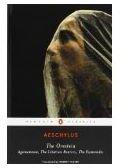The Significance of Nets in the Greek Classic "Agamemnon'
The Oresteia
Many things have been named Agamemnon over the ages, from Royal Navy ships to characters in the Dune universe. But the original,
canonical, Agamemnon was the King of Argos throughout the Trojan War. His name is deeply embedded in the classical literature of the time, and has been used as the title for the first part of Aeschylus’ Greek tragedy, the Oresteia.
The Oresteia, like Homer’s Odyssey, deals with the end of the Trojan War. It details the homecoming of Agamemnon to his wife, who with her lover Aegisthus intends to usurp his throne. The three plays can be said to act as an allegory for the development of a formal judicial system, moving from a vendetta based system of justice in Argos to the Athenian system of litigation. But within Agamemnon alone there are a number of fascinating motifs, with the significance of nets being perhaps one of the best known.
Analyzing the Signifiance of Nets

The following section gives examples of nets being used as a metaphor in Agamemnon, but quotes out of context are often meaningless. Classical Greek literature tends to use nets, along with yokes, to denote a form of control. Characters are often described as being under the “yoke-strap of compulsion”, such as when Agamemnon sacrifices his daughter for fair winds. He feels forced to a certain path by the capricious fates and gods.
During the play, Zeus is described as throwing a net without holes over the towers of Troy, trapping all who defend her within. There are references to doom being all around the characters like a net, and being in a net the Furies wove. In this instance the net is certainly being used as a metaphor for people being trapped by circumstance, but also links in with the previous idea that they are forced to a single path, in order to escape the bonds that tie them down.
When Clytemnestra hears of Agamemnon’s wounds, she says that if all the rumours were true he would have more holes than a net. Later, when boasting of killing Agamemnon, she says that she flung a robe around him like “An endless web, as by some fisher strung.” The chorus then refers to Clytemnestra as a “spider thing,” turning her from a person to a horrifying caricature of her animalistic nature. By treating Agamemnon as an animal she herself has become one, with all the virtues and vices ascribed to it.
Examples of Nets in Agamemnon
All line references in this section are taken from Professor Gilbert Murray’s translation of Agamemnon, available through Project Gutenburg. Using a program like Notepad to open it, you should be able to easily find the referenced lines. Breaks between lines are indicated by ‘||’.
The first reference to nets comes on line 815:
“0 Zeus, All-ruler, and Night the Aid, || Gainer of glories, and hast thou thrown || Over the towers of Ilion || Thy net close-laid, || That none so nimble and none so tall || Shall escape withal || The snare of the slaver that claspeth all?”
The second, on line 1517:
“Oh, had he half the wounds that variously || Came rumoured home, his flesh must be a net, || All holes from heel to crown!”
A third, on line 1818:
“To thee she speaks, and waits … clear words and true! || Oh, doom is all around thee like a net; || Yield, if thou canst…. Belike thou canst not yet.”
A fourth reference to nets is made on line 1962:
“Ah, ah! What is it? There; it is coming clear. || A net … some net of Hell. || Nay, she that lies with him … is she the snare? || And half of his blood upon it. It holds well….”
When Clytemnestra is boasting about killing Agamemnon, she makes several references to ‘webs’ (line 2496). The chorus also describes Agamemnon as “caught in the web of this spider thing” (line 2681, 2716).
“The man could neither guard himself nor fly. || An endless web, as by some fisher strung, || A deadly plenteousness of robe, I flung ||All round him, and struck twice; and with two cries || His limbs turned water and broke;”
While a fifth and final reference comes on line 2827:
“To see him, in this net the Furies wove, || To atone the old craft of his father’s hand.”
As a final aside, and while not mentioned in the text, during the enterance of Agamemnon Cassandra would be dressed in a white, full length robe covered by an agrênon, or net of wool with large meshes. This befits her role as a prophetess, and is something that listeners of the time would have been aware of.
